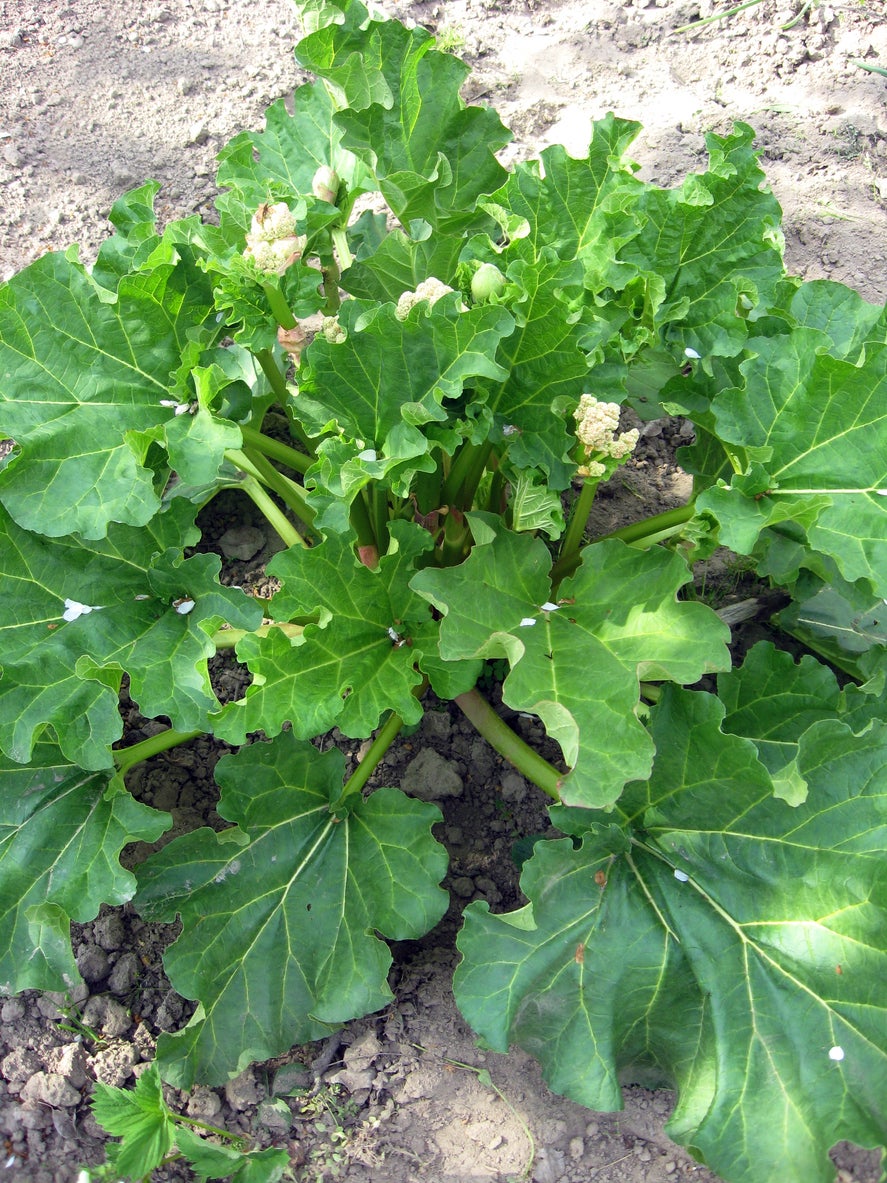Planting Riverside Giant Rhubarb: How To Grow Giant Rhubarb Plants

If you are a rhubarb lover, try planting Riverside Giant rhubarb plants. Many people think of rhubarb as being red, but back in the day this veggie was more commonly green. These huge rhubarb plants are known for their thick, green stems that are excellent for canning, freezing, making into jam, and of course, pie. Read on to learn how to grow giant rhubarb plants and other Riverside Giant rhubarb info.
Riverside Giant Rhubarb Info
Rhubarb is a perennial that loses its leaves in the fall and then requires a winter chilling period to produce in the spring. Rhubarb can be grown in USDA zones 3 through 7 and tolerates temps as low as -40 degrees F. (-40 C.). All rhubarbs thrive in cooler temperatures, but Riverside Giant green rhubarb is one of the hardiest varieties of rhubarb out there.
Like other types of rhubarb, Riverside Giant green rhubarb plants rarely suffer from pests, and if they do, the pests usually attack the foliage, not the stem or petiole which is the part we eat. Diseases can occur, especially if giant rhubarb plants are grown in soil that is too moist or in an area with little aeration.
Once Riverside Giant green rhubarb has established, it can be left to grow untended for 20 years or more. It will, however, take about three years from planting before you can harvest the plant.
How to Grow Giant Rhubarb Plants
When planting Riverside Giant rhubarb crowns, choose an area of full sun to partial shade with deep, rich, and moist but well-draining soil in the spring. Dig a hole that is wider than the crown and deep enough so that the eyes are 2 to 4 inches (5-10 cm.) below the soil’s surface. Amend the soil with compost or aged manure prior to planting. Fill in around the crown with the amended soil. Tamp down around the crown and water in well.
Generally, rhubarb does quite well when left to its own devices. That said, rhubarb is a heavy feeder, so apply compost annually or an all-purpose fertilizer according to the manufacturer’s instructions early in the spring.
If you live in a warmer region, mulching around the base of the plant will help keep the soil cool and moist. Keep the soil moist but not sodden.
Sign up for the Gardening Know How newsletter today and receive a free copy of our e-book "How to Grow Delicious Tomatoes".
If the plant quits producing as it should after five or six years, it may have too many offsets and is overcrowded. If this seems to be the case, dig up the plant and divide the rhubarb in the spring or fall.

Amy Grant has been gardening for 30 years and writing for 15. A professional chef and caterer, Amy's area of expertise is culinary gardening.
